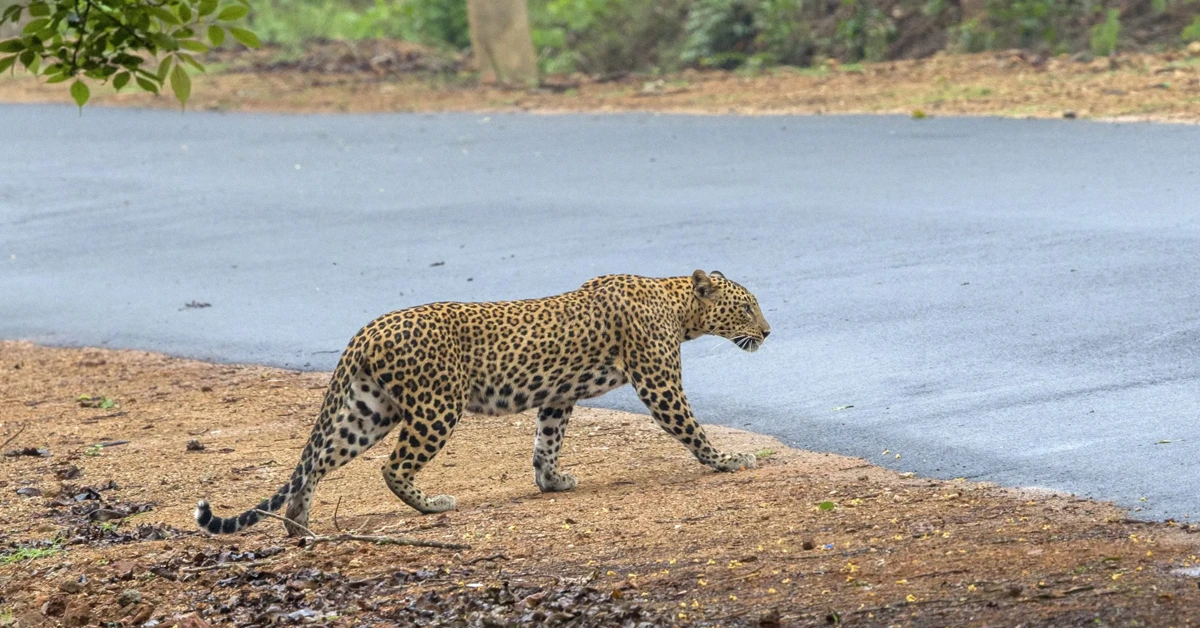
Pune International Airport, one of Maharashtra’s busiest aviation hubs, has found itself grappling with a persistent and dangerous wildlife intrusion—leopards roaming freely within its high-security perimeter.
The first confirmed leopard sighting was reported on April 28, and despite weeks of intensive search operations, the big cats continue to elude capture, raising alarm over passenger safety and airport operations.
The presence of at least two leopards was captured on surveillance footage installed across the airport’s 2,900-acre sprawl.
These visuals, which also show jungle cats, hares, and stray dogs, have triggered serious concerns about the airport turning into a thriving habitat for wildlife.
Authorities had sealed off 30 suspected entry points, set up 20 camera traps, and deployed cages across six strategic locations, yet the wild animals have repeatedly outwitted every containment strategy.
The situation intensified after Indian Air Force (IAF) personnel—responsible for overseeing security within parts of the airport—reported another leopard sighting, prompting the involvement of the Pune Municipal Corporation, forest officials, and dog squads.
Five stray dogs have since been captured, but the leopards remain at large, using hidden entry points such as monsoon drains and underground sewage lines that have since been barricaded with iron grills.
These structures, previously overlooked, have proven to be perfect hiding and hunting zones, rich with prey like rabbits and stray dogs.
According to wildlife experts, the airport’s limited human activity, abundance of water sources, and easy availability of food have created an ideal habitat for the leopards.
Despite continuous patrolling and surveillance, no leopard has yet been captured.
“The leopard has walked past cages but hasn't stepped inside,” the media reported quoting a forest official, who described the animals as extremely cautious and intelligent.
The crisis prompted Union Minister of State for Civil Aviation, Murlidhar Mohol, to convene a high-level meeting with stakeholders from the PMC, IAF, and airport authorities.
“We are closely monitoring the leopard’s movements. All necessary steps are being taken to ensure there is no threat to passengers or flights,” Mohol assured.
Airport Director Santosh Dhoke reiterated that the situation is being managed in active coordination with the IAF and forest department.
Neha Panchamiya, president of RESQ Charitable Trust, noted that the leopards are likely to move on once their prey base within the airport declines. But until then, the threat remains active.
The issue goes beyond leopards. Rising stray dog and bird activity has posed serious threats to aircraft, highlighted by a recent bird strike incident that affected a flight engine.
A field survey has also identified 11 unauthorised garbage dumping sites within a 5–6 km radius, which are now being cleared to reduce wildlife attraction.
Ironically, even as wildlife challenges escalate, the airport continues to handle record-breaking traffic. The Airports Authority of India reported over 1.04 crore passengers in FY 2024–25, a 9.8% rise from the previous year.
May 2025 saw an all-time monthly high of 9.38 lakh passengers, while cargo operations crossed 4,200 metric tons.
Though the leopard remains the most elusive figure on the runway, airport officials are doubling down on efforts to reclaim the facility as a secure zone for aircraft—not animals.
ALSO READ | Killer Leopard Captured In Uttar Pradesh
The Story Mug is a Guwahati-based Blogzine. Here, we believe in doing stories beyond the normal.